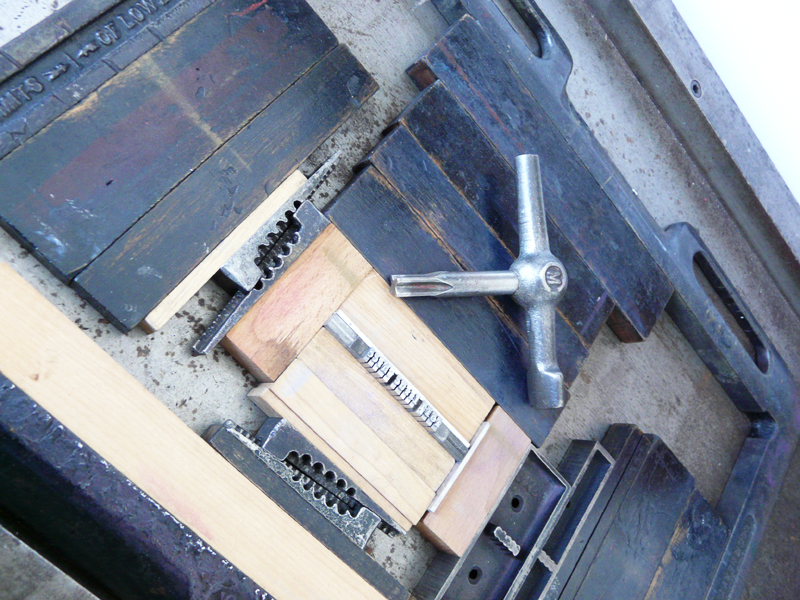Dogwood Letterpress is a local Vancouver company that we proudly carry at Paper-Ya. Read on to learn more about the beautiful Letterpress technique in Part 1 of our interview!
Dogwood Letterpress Studio
What is letterpress?
Letterpress is the use of a relief (a raised surface) to transfer ink from that surface onto paper in order to create text. Though often credited to Johann Gutenburg (c.1450), the roots of relief-printed communication are in Asia. These early methods often employed carved wood for printing
Contemporary letterpress is noted for the deboss (impression) created in the paper: a lovely textural effect that so many of us have fallen in love with in this age of the flat, digital screen. Ironically, master printers originally aimed for an impression-free print on the paper, termed the “kiss impression” — a very difficult thing to achieve. Imagine heavy machinery, metal and wood hurtling at high speed toward a thin piece of paper, and hitting it perfectly level so that the ink is even, and the paper has no indentations! No small feat.
Letterpress shops like ours, however, are often asked for deep-impression printing on soft (often cotton) paper that people can feel, and see. Admittedly, we generally aim for deep-impression results. It’s worth noting that, not surprisingly, deep-impression printing has an impact on the old machines and on the relief materials (it can flatten your metal type). This is the dilemma of contemporary letterpress. We want to preserve the old machines & media, but we also want to produce results that keep people passionate about letterpress.
*Maravelas, Paul. Letterpress Printing, A manual for modern fine press printers
[photo of Chandler & Price press c. 1912]
How long have you been doing letterpress? What got you into doing letterpress?
As a teenager I first became acquainted with printing and graphic designers while working in our small family offset print & copy shop. I have a memory of my Dad explaining how to convert a drawing into two printing plates (red & black) for a family holiday card when I was nine years old. Apparently family involvement in the printing industry goes back four (possibly five) generations in my family – something I don’t think I appreciated early on.
The graphic design path took me to New York, and as an intern at Print Magazine, I lucked into mentors there who were passionate about the written word, design & typography. The late Andy Kner, an accomplished art director (and very patient, generous teacher), was art director at Print at the time; he had his own press, along with a selection of beautiful old Hungarian blocks and type that he would use to print personal projects — often cards. The letterpress process was still mysterious to me as a computer-based graphic designer, but like so many of us when we first see letterpress, I wanted to learn more.
Several years later I took a workshop in Marcham, UK and that was a turning point for me. Shortly after the workshop, I bought a small desktop platen press (C&P Pilot) and about 300lbs of lead type from Don Black Linecasting in Toronto! In 2015, my husband & I bought our first large press, (a 1,000lb 10x15 Chandler & Price platen press) and since then we’ve acquired a few other pieces of vintage printing equipment that we’ve put to work, including a C&P from the century-old Vancouver Chinatown print shop Ho Sung Hing, which closed in 2014. The old machinery is a joy to work with, and the pleasure that the textural printing seems to bring to others keeps me completely in love with this medium.
What is the most unique aspect of letterpress?
It’s hard to pick just one aspect! I think the easy answer would be the resulting print (each one is unique as it comes off of a hand-fed platen press). But where it concerns the process of printing this way — I’d have to say it’s the dimensional problem-solving.
With letterpress, the designer/printer is strategizing how to physically create a dimensional structure (the relief) that will print, often using disparate media: wood, metal, resin, ink, cotton, etc. There are many moving parts that must fit together, lock into the press, transfer ink from rollers to paper in a symbiotic way. The process of design, assembly, leading up to your ideal print is filled with intriguing puzzles that are of the three-dimensional, physical world. This is a special, tactile treat, both in process & result, compared to the contemporary digital realm where we spend so much of our time.
To be quite honest, there are days when it's frustrating having so many moving parts when a particularly sticky printing problem occurs! I don't want to imply that it's all unicorns and rainbows of inspiration!
It’s important to note that we here at Dogwood Letterpress are far from being masters of this medium. It’s a process! I think you could print for a lifetime and still have so much to learn. For an example of some of Canada’s most experienced and finest letterpress printing right here in our backyard on Granville Island, look no further than Blackstone Press! Granville Island is also host to many other printers, some of whom can be found at Dundarave, where you can take workshops, and learn about the wide variety of relief printing that’s out there (not just letterpress). Emily Carr has a room full of press equipment, and hosts letterpress workshops from time to time.
Thank you for reading Part 1 of our interview with Dogwood Letterpress. Stay tuned for Part 2!
Blog by Christine Wiebe












